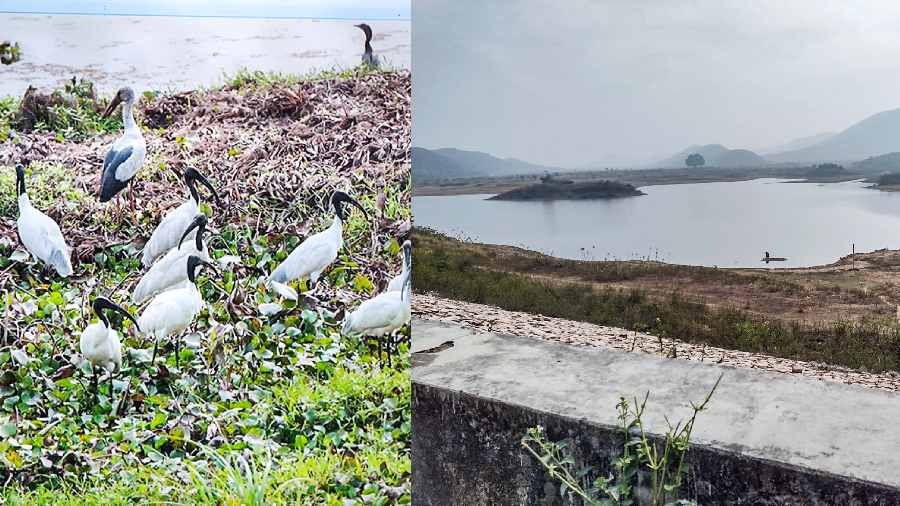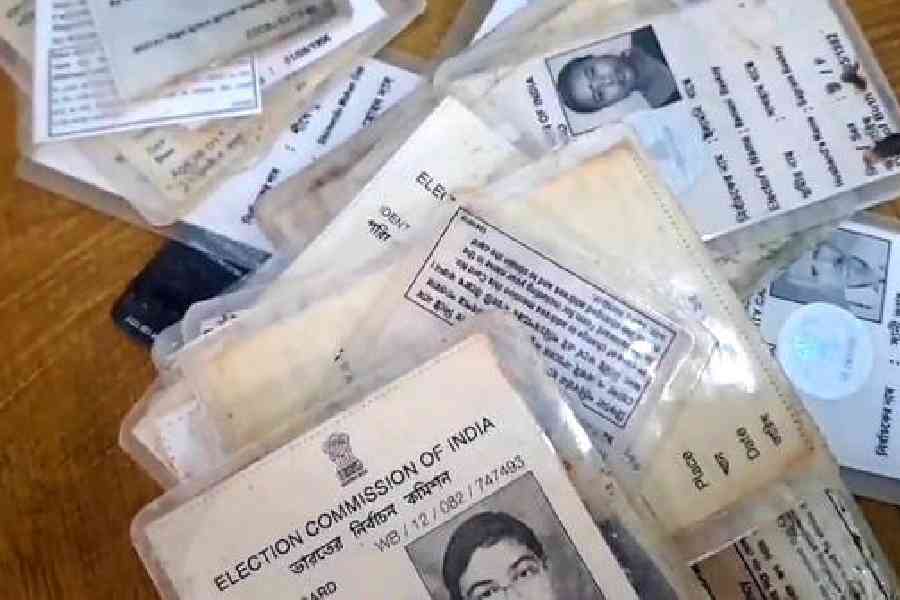Water birds have gone missing from the lakes, tanks and reservoirs at Bhimbandh Wildlife Sanctuary in Bihar’s Munger district, leading to a call by avian experts for a probe into the unnatural phenomenon to find out the reasons and address them.
Bird watchers and experts had rejoiced four months ago when Union home minister Amit Shah announced that the security forces had driven out Maoists from the remote areas of the scenic Bhimbandh sanctuary, around 200km southeast of Patna, and established permanent camps there.
The sanctuary, spread over 700sq km, had been virtually inaccessible to people from outside due to Left-wing extremism (LWE).
Bird experts were eagerly waiting for a trip this winter, when migratory birds from Europe and central Asia would have arrived to escape the harsh cold in their native places.
“We went to the Bhimbandh sanctuary with much eagerness. We will not vouch for the absence of the Maoists, but water birds — residents and migratory — are not present in and around the lakes, tanks, ponds, reservoirs and dams in the area. It came as a shock to us,” Bombay Natural History Society (BNHC) and Indian Bird Conservation Network (IBCN) member Navin Kumar told The Telegraph.
“Better-known water bodies like the Kharagpur Lake, Kukurjhar Dam, Talkund reservoir and many others were completely devoid of birds. This is not a natural and ordinary phenomenon.
“There seems something fishy about it. It should be investigated. Water samples should be taken and analysed. Hunting and poaching, if any, should also be stopped,” Kumar added.
Kumar had gone with a group of birds and fauna experts, including the Zoological Survey of India (ZSI) scientist and its Gangetic Plains Regional Centre officer-incharge Gopal Sharma, in the hope of spotting a large number of resident and migratory birds in the hilly and forested region.
The experts were hoping to see at least resident birds like the lesser whistling duck and spot-billed duck, and migratory birds like the great crested grebe, bar-headed goose, gadwall and other species that come in large numbers from Europe and Central Asia to wetlands in different parts of Bihar.
Most of these birds stay in the water during the day and move to nearby land areas in the evening. Discussing the subject of the missing water birds at Bhimbandh, ZSI scientist Sharma told The Telegraph: “There could be many reasons behind the absence of the aquatic birds. A lack of food and safety, as well as some problem in the water in the reservoirs and tanks, could be some of the reasons.
“The aquatic birds mainly survive on macrophytes (aquatic plants) growing in or near water. A scarcity of these could lead to the birds avoiding the area. Also, birds avoid areas where hunting and poaching happen.”
However, the group was able to spot over 50 species of terrestrial birds in Bhimbandh.
The black drongo, red water lapwing, common myna, greater coucal, cattle egret, coppersmith barbet, red-naped ibis, green bee-eater, long-billed crow and plum-headed parakeet were among them.
Asked about the water birds missing from Bhimbandh sanctuary, Arvind Kumar Chaudhary, principal secretary with the state environment, forest and climate change department, said: “Now that this has come to my knowledge, I will seek details about it from our officers. Areas in neighbouring Bhagalpur district have a large number of water birds. So we will look into this.”
Bhimbandh is said to have been named after Bhim, one of the five Pandavas, who is said to have built a dam in the area during the brothers’ incognito stay in the area.
The sanctuary has several hot springs that have water throughout the year, indicating a potential for geothermal energy.










